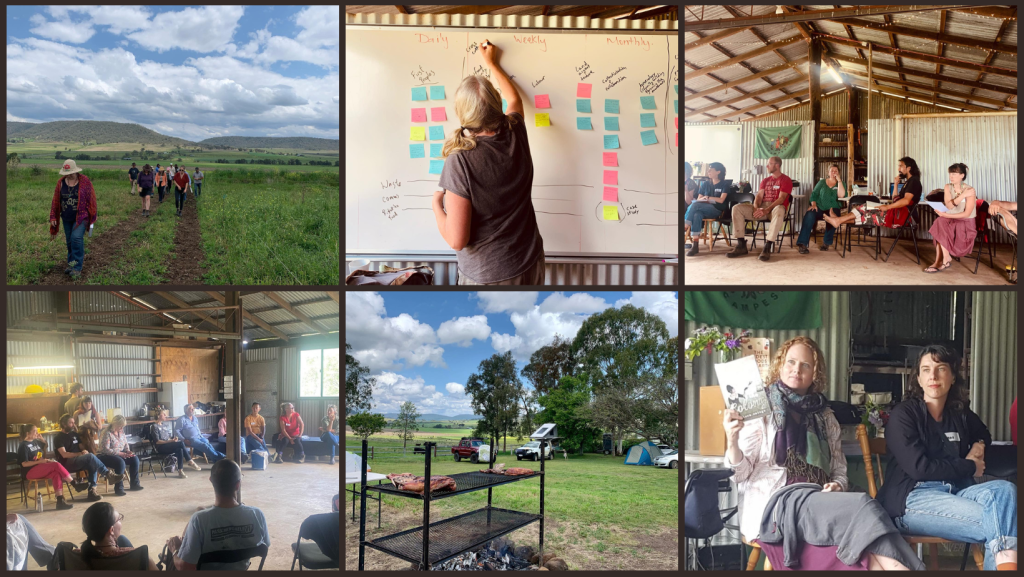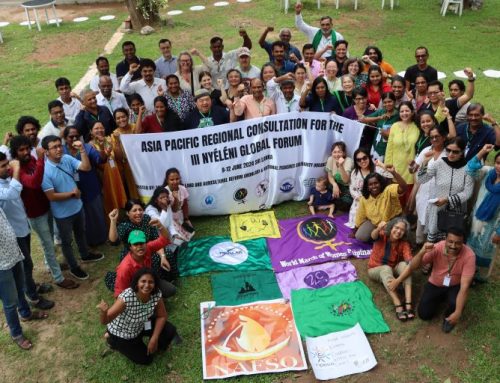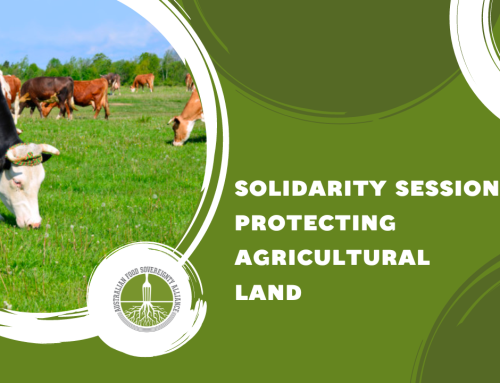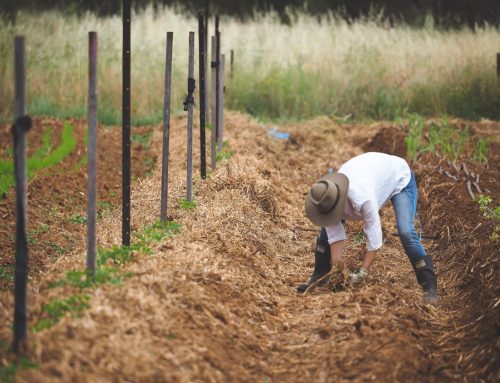This post was written by AFSA President, Tammi Jonas. To read more of her posts, head to Tammi Jonas: Food Ethics.
Negotiations towards the Global Biodiversity Framework (GBF), which pursues a 2050 Vision for a world living in harmony with nature, are in the final stage before adoption at COP15 of the Convention on Biological Diversity (CBD) in December 2022.
Amongst the many elements still under negotiation is the wording of the mission for the GBF. There are five alternative wordings, of which three have reference to a nature-positive world.
Language is never neutral, and language in international conventions relies on a long history of politics, compromises, and negotiated definitions. Any newly conceived language should be closely scrutinised:
- What does it look like?
- What does it mean?
- How will it be measured?
- Who is supporting it?
- Will it benefit some groups over others, or will it deliver equity and justice for all?
What does it look like?
The Informal Group on the post-2020 GBF has proposed streamlined text wherein the term ‘nature positive world’ is placed as alternative text to the text ‘to put nature on a path to recovery’. The term ‘nature positive’ is also used in Targets 18, 19.1 and Section H.
What does ‘nature positive’ mean?
The term nature positive sounds good, but its meaning remains unclear in the context of the CBD.
There are various definitions for nature positive, all variations on this one:
Nature-positive is the term used to describe a world where nature – species and ecosystems – is being restored and is regenerating rather than declining.
‘Nature’ can be many things which are not biodiverse but do have ‘natural elements’, such as a monoculture plantation which lacks ecosystem diversity but is still called ‘nature’ by many.
‘Positive’ is even more ambiguous and is related to other concepts such as ‘net gain’ and ‘no net loss’. The documents explaining the Nature Positive concept make it clear that these are indeed the basis of the proposal.
The CBD text does not define ‘nature’. In contrast, ‘biological diversity’ (or biodiversity) is clearly defined, and includes ecosystems and habitats, species and communities, and genes and genetic material. These all play important social, scientific or economic roles .
No Net Loss and Net Gain
A ‘net’ approach implies that it’s acceptable to keep losing elements of nature (e.g. carbon or biodiversity) as long as losses are compensated elsewhere (often, later on).
There are several problems with this approach:
- It fails to account for the losses of ecosystem functions and the benefits they provide to the human and more-than-human world.
- It presupposes that one can compensate one type of ecosystem, species, or even sacred grounds for Indigenous Peoples for another, ignoring the uniqueness of each of them, as well as their multiple biodiversity values, as identified by IPBES. When protecting biodiversity, it is nonsensical to suggest we can offset the loss of one species with another, or that we can replace the destruction of one habitat or ecosystem with another.
- It promotes the financialisation of nature, as these offsets commodify nature by putting an economic value on it, to be traded in markets.
- In climate policies, the term ‘net zero’ has justified carbon offsetting schemes that have delayed the urgent decarbonization of our economies and given an easy way out for polluters to keep emitting at current levels.
How will we measure ‘nature positive’?
The document called ‘The Measurable Nature Positive Goal for the CBD Mission’ includes ‘outcome metrics for the nature-positive proposal such as quantifying the maintenance and improvement of natural processes, ecosystems and species over time, through natural processes such as hydrological integrity, sediment transport and the integrity of estuaries, migration patterns, carbon sequestration and storage, the integrity of tidal zones, natural fire regimes, and vegetative cover that supports rainfall patterns.
None of the proposed metrics are agreed upon in any multilateral space. If the CBD approves them, it will water down what little ambition exists in the GBF. Not only because offsetting maintains the right to destroy, but also because it gives actors and decision makers the option to decide which metric to use. The measure which is easiest to fulfil, such as carbon sequestration and storage, will take preference, even if they are not the best indicators for biodiversity or the rights of Indigenous Peoples and peasants. A concrete example is reforestation with species that capture high amounts of carbon but are very poor in ecosystem functioning. Neither is equity factored in, with the Global South and its peoples likely to face the greater burden of becoming ‘nature positive’, as biodiversity is largely in these geographies, with no consideration of the role that the Global North has historically played, and continues to play, in fostering biodiversity loss.
Who is supporting ‘nature positive’?
A coalition of organisations including World Wide Fund for Nature (WWF), the IUCN, the World Resources Institute (WRI), The Nature Conservancy (TNC), the Wildlife Conservation Society (WCS), BirdLife International, Conservation International, Business for Nature, and the World Business Council for Sustainable Development (WBCSD), among others, argues for the adoption of a Nature-Positive Global Goal for Nature. They suggest this goal should be combined with development and climate goals to create an integrated overarching direction for global agreements of an “Equitable, Nature-Positive, Carbon-Neutral” world.
There is also a call for governments to announce their commitments related to Nature Positive. In 2021, the G7 leaders announced that ‘our world must become not only net zero but also nature positive, for the benefit of both people and the planet’.
In June 2021, the Taskforce on Nature-related Financial Disclosures was launched. This Taskforce consists of 34 individual members representing financial institutions, corporates, and market service providers with US$19.4 trillion in assets, and it aims to support a shift in global financial flows away from nature-negative outcomes and toward nature-positive outcomes.
Whose interests are served by ‘nature positive’ framing?
The business sector is pushing strongly for this language. Once again finding a way to capitalise on false solutions to problems they have caused, The Future of Nature and Business report (2020) estimates that a nature-positive economy can unlock $10 trillion of business opportunities by transforming the three economic systems responsible for almost 80% of nature loss: energy, infrastructure, and food.
In fact, the most effective way to transform economic activities in order to halt and reverse biodiversity loss is through strong regulatory measures on the actors behind the destruction of ecosystems. A framing that would benefit the business sector more than key rightsholders will not take us on a path to transformative change.
Indigenous peoples, peasants, and local communities, women, and youth are usually marginalized from offsetting mechanisms, certification schemes, and climate/conservation grants and incentives, either because their typically small organisations don’t comply with the established criteria to access funding, or because much of their fights for land and tenure rights, socio-ecological justice and against extractive industries don’t count for offsetting purposes.
What do we want to change?
We need equity and rights-based approaches at the core of the Global Biodiversity Framework, and this means that we need a vision and a mission that respond to this need.
To genuinely protect biodiversity, we need to ensure that ecosystem functions, ecological integrity, and the well-being of the communities who depend on them are no longer threatened and destroyed. And this will only happen if we embrace a global goal that doesn’t offer an easy way out for further destruction.
Rightsholders, their actions on the ground, traditional knowledge and their fights for human rights and land and tenure rights have to be supported through direct funding mechanisms. These are not defined in the nature positive framing, but they are in the Nagoya Protocol, UNDRIP, and UNDROP.
Genetic resources, species, ecosystems, their functions, and the benefits they provide can’t be replaced. Once a species is extinct, it is gone forever.
We won’t accept that the precious cultural and biological diversity we have is lost to an unfair and unequal socio-economic system, and we won’t accept promises that once lost this diversity can be replaced.
How do we bring about the change?
Halting biodiversity loss is paramount, not just slowing down its rate. It needs to be given precedence over restoration and recovery – because extinct species cannot be restored. So, preserving existing biodiversity needs to be the top priority and is not automatically included in ‘recovery’. A distinction between loss and recovery is also needed to avoid offsetting.
Socioecological justice, which encompasses the complexity of the multifaceted crisis we are facing, should be at the core of new approaches to biodiversity conservation. We need this agenda to deliver results for all people, especially those who are most connected to biodiversity and who can lead humanity on the path to harmony with nature.
Indigenous Peoples, peasants, and local communities are the best guardians of the world’s ecosystems, and yet their vision and wisdom are not leading nor recognised in the nature positive framing. Women are custodians to precious knowledge and practices to manage biodiversity in a sustainable way, and youth are already implementing transformative change actions on the ground; both are missing as actors in nature positive framing.
Equity and justice for all people, especially those most connected to biodiversity who are often marginalized from environmental decision-making processes, are currently not the core of nature positive framing. Therefore, we need to rethink the mission of the Global Biodiversity Framework to ensure that in 2030 we have effectively addressed the drivers of biodiversity loss, for the benefit of present and future generations and all life on earth.






